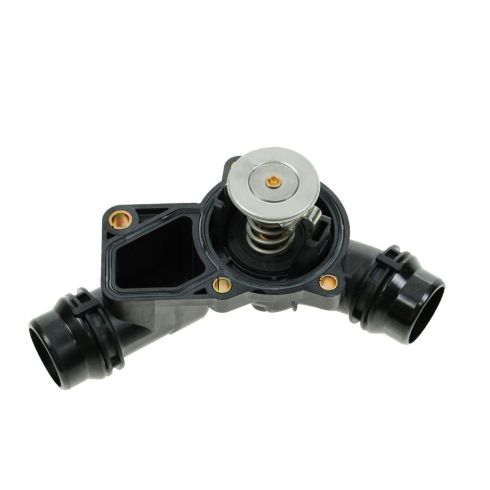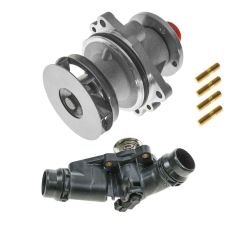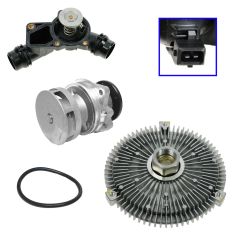1AEMX00052-BMW Thermostat with Housing Assembly TRQ ECA92791

Replaces
2001 BMW 330i Thermostat with Housing Assembly TRQ ECA92791

Product Reviews
Loading reviews
4.25/ 5.0
8
8 reviews
1999 BMW thermostat
December 20, 2018
I purchased this part for my son's car, because a friend of mine recommended 1AAuto ,I was a little sceptical because I always used original parts,a specialty when is about my family,but I must say that I was very impressed when I inspected the part the quality is as good as the original,for a fraction of the price,after instalation,my problem was solved and have no more issues,my son drives his car with confidence and I have a better option when autoparts will be needed.
I gladly recommend 1AAUTO.
Perfect fit!
February 16, 2019
I needed a thermostat for my BMW 328i and you all came through with perfect price, fast delivery, and I am so happy. I will be using you all from now on for all my auto parts needs on both my cars.
Thank You!
David G Murphy Jr.
Las Vegas, Nevada
BMW 325xi 2004
October 5, 2019
Disappointed I received the MFA and it set off all kinds of warning lights transmission brakes ABS light the air conditioning went on the fritz transmission quit shifting smoothly. I requested a replacement same issue these are not compatible with this BMW model It shouldnt get any stars not compatible
It fit & it worked
October 2, 2020
Yay back on the road again. I was able to get the part I needed in a timely manner. I have and will continue to recommend 1A auto
July 5, 2021
Product was greatttt
January 26, 2023
The product fits perfectly, no problems as of yet.
longevity is an issue
December 20, 2023
Purchased this part in June 2022. It fit perfectly and functioned perfectly as well. I am now in December 2023 and the thermostat is sticking open and the engine is running cold now. With that said now I have to replace and take the time to fix. I have driven 30k miles since install and did expect this part to last to 60k honestly. Sucks but what can you do?? 1Aauto replaced free of charge but old one has to be sent back on my dime. There are pros and cons here so choice is up to you. Im going to swap them out and hopefully this other one lasts longer. If not I will not purchase this product again and waste my time and energy. Gave this three stars because I understand I am not buying BMW oem parts here. I also understand everything is plastic china parts so what can I honestly expect. This is just a daily driver older car so I'm not breaking the bank here.
January 23, 2024
Perfect fit.
Customer Q&A
No questions have been asked about this item.
BMW is a registered trademark of Bayerische Motoren Werke AG. 1A Auto is not affiliated with or sponsored by BMW or Bayerische Motoren Werke AG.
See all trademarks.










